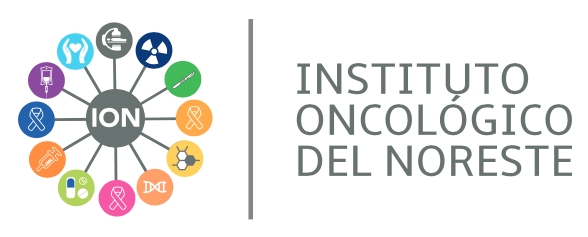Skin Cancer / Lymphomas / Sarcomas
Skin Cancer
Non melanoma skin cancer (NMSC) is the most common cancer in the United States with more two million cases diagnosed yearly. Basal cell carcinoma (BCC) account for 80% of NMSC and squamous cell carcinomas (SCC) comprise 20% of NMSC. Most are considered related to exposure to the sun light. Often basal cell and squamous cell cancers can be completely cured by minor surgery. However, surgery may not be suitable for all types of skin cancer. In other cases radiation therapy needs to be used instead of surgery because of cosmetic concerns for example in the face. Some of the factors affecting this decision are:
- Type of cancer
- Location of the cancer
- Previous use of radiation therapy
- Suitability of other treatments
- Cosmetic concerns
- Patient preference

The ION team have extensive experience in the management of non-melanoma skin cancers. They will assess your unique situation and recommend the best and most effective course of treatment for you.
Skin cancer can be prevented following certain recommendations:
1- Avoid sun especially between 10 AM and 4 PM.
2- Avoid skin burning especially in younger age.
3- Avoid artificial tanning and UV tanning salons.
4- Cover up from sunlight exposure with clothing, wear hats and use UV-blocking sunglasses.
5- Use a broad spectrum (UVA/UVB) sunscreen with an SPF (sun protection factor) of 30 or higher every day. For extended outdoor activity, use a water-resistant, broad spectrum (UVA/UVB) sunscreen with an SPF of 30 or higher.
6- Apply sunscreen to your entire body 30 minutes before going outside. Reapply every two hours or immediately after swimming or excessive sweating.
7- Keep newborns out of the sun. Thereafter sunscreens should be used on babies over the age of six months.
8- Examine your skin head-to-toe every month.
9- See your physician every year for a professional skin exam.
Skin Cancer Treatment with Brachytherapy
Brachytherapy is a very effective curative treatment option for skin cancer. Long-term studies following patients who have received Brachytherapy show that the vast majority continue to remain free of skin cancer many years after treatment. High Dose Rate (HDR) Brachytherapy treatment is painless. At ION, treatments usually last less than 5 weeks, generally 1 or 2 days per week. All treatments for skin cancer have minimal side effects. Immediately after the Brachytherapy treatment, or rarely towards the end of the course of therapy, redness or a rash may appear on the skin. This usually resolves within a week. Recovery time after Brachytherapy is usually very short and you can normally work during treatment. Cosmetic results are excellent.

Lymphomas
Lymphoma is a type of cancer that originates in cells of the lymphatic system. There are many types of lymphomas; however, these tumors are commonly divided into two main categories: Hodgkin’s and Non-Hodgkin’s Lymphomas.
Lymphomas are curable if detected early and treatments are well tolerated. Historically, Non-Hodgkin’s Lymphomas were one of the first cancers cured with Radiation Therapy alone due to its radiation sensitivity.
Non-Hodgkin lymphomas can be further divided into cancers that have an indolent (slow-growing) course and those that have an aggressive (fast-growing) course. These sub-types behave and respond to treatment differently. Both Hodgkin and non-Hodgkin lymphomas can occur in children and adults, and prognosis and treatment depend on the stage and the type of cancer.
Lymphomas Treatment
The management of lymphoma requires a multidisciplinary team as the efforts of the surgeon, the hematologist, and the radiation oncologist must interact in the management of this disease. Dr. Beatriz Amendola has well over 30 years of experience successfully treating Lymphoma patients with Radiation Therapy. Radiation therapy can be used alone for early disease and combined with medication in more advanced cases.
Sarcomas
Soft Tissue Sarcomas
Soft tissue sarcomas are malignant tumors that originate in the soft tissues of the body. Soft tissues connect, support and surround other body structures, including muscles, fat, blood vessels, nerves, tendons and the lining of the joints (synovial tissues). These are relative rare tumors: in the United States 11,000 estimated cases of sarcoma are diagnosed yearly. These tumors are very serious because of their aggressive behavior with a tendency to grow fast and spread to other organs at distance such as lung and liver with “so called” metastases. There are several types of soft tissue sarcomas and they can occur in multiple areas of the body. Soft tissue sarcomas are treated with surgery, radiation and in some cases chemotherapy.
Any abnormal growing mass in the body needs to be studied and patients should be evaluated by a physician to determine the proper action required.
Soft Tissue Sarcomas Treatment
In ION, we have successfully treated numerous patients with soft-tissue sarcomas using cutting-edge Radiation Therapy techniques.
